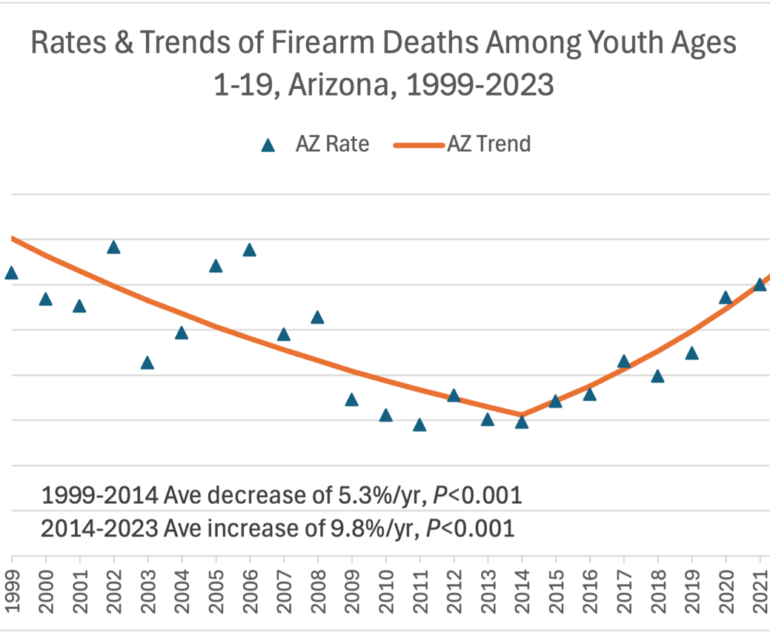States (including Arizona) have vaccination requirements for school attendance. States report data to CDC on the number of children in kindergarten who are exempt from their state’s vaccine requirements. That data provides the best proxy we have for actual childhood immunization rates. CDC just released their latest analysis on national immunization rates (as measured by exemptions) this week… and it’s not a pretty picture for Arizona. Nationally, 2-dose MMR coverage was 93.1% while it is only 89.9% in Arizona. In fact, Arizona has among the lowest childhood vaccination rates in the U.S.
See: Coverage with Selected Vaccines and Exemption from School Vaccine Requirements Among Children in Kindergarten — United States, 2022–23 School Year | MMWR
There are many reasons why vaccination rates can be poor. Part of it can be attributed to parental vaccine hesitancy and even politics (these days). Some are related to policy decisions. For example, states that only allow medical exemptions to school attendance requirements (no ‘personal exemptions’) have higher vaccination rates than those that allow for personal exemptions (like Arizona).
But much of it can be attributed to how easy or difficult it is for parents to vaccinate their kids. The more difficult/inconvenient it is to get your child vaccinated the more likely it is that they’ll remain unvaccinated.
Sadly. it’s has been getting harder and harder for parents to get their kids vaccinated in Arizona because so many doctor’s offices dropped out of the Vaccines for Children program.
The Vaccines for Children Program exists to make it convenient for families to get their kids vaccinated and to make sure kids whose parents don’t have health insurance can still get their kids vaccinated. Funding for VFC comes via the CDC, who buys vaccines at a discount and distributes them to states. States distribute them to physicians’ offices & clinics that take part in the VFC program. ADHS manages the VFC program in our state.
So how good of a job has Arizona been doing implementing the VFC program? Not very good. Arizona lost 50% of its VFC providers during the Ducey administration – going from 1,200 to 600… reducing access to vaccine and lowering childhood vaccination rates.
Arizona now only has 6 VFC providers per 10,000 Medicaid eligible kids, while the national average is 24 providers per 10,000 Medicaid kids… meaning Arizona only has 25% of the number of VFC providers per Medicaid enrolled kid compared with the national average.
Why the decline?
Providers who left VFC over the last few years say they quit because of the administrative hassles imposed on them by the state over the last 8 years (ADHS not AHCCCS). At the top of the list of grievances is ADHS’ punitive practice of financially punishing providers who have vaccine wastage rates over 5% making participation financially difficult (see this letter to AZAAP members regarding ADHS’ policy).
While it’ll be very difficult to bring back providers who’ve left the VFC program, there are immediate interventions that ADHS should take to stop the exodus more providers from the VFC program like immediately suspending vaccine restitution penalties for wastage rates over 5% pending the development of a new ADHS Restitution Policy and making sure remaining VFC providers know about the suspension of their punitive restitution penalties.
There will be many other recommendations coming out shortly in a report from the Arizona Partnership for Immunizations, but immediately suspending ADHS’ punishments is needed right now to stop even more providers from fleeing the coop.


